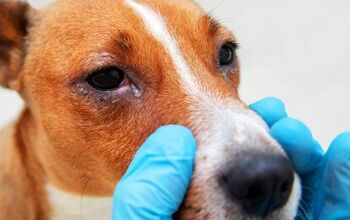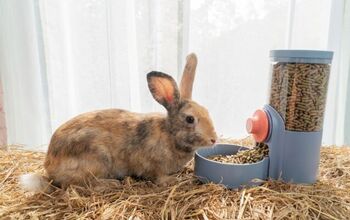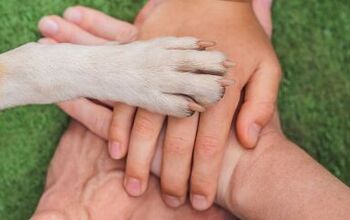Corgi Inu

Corgi Inu Basics
Foxy, cute, and with a unique character, Corgi Inu will disarm you with their charm. This designer dog breed is a result of crossbreeding a Shiba Inu with a Welsh Corgi, either Pembroke or Cardigan variety. The breed is also known under the name Shiba Corgi, and while fairly rare, this hybrid dog has been gaining more popularity lately. While it’s most often their cute looks that draw in people, their personality is as loveable as their appearance: intelligent, fiercely loyal, and fun to be around, these dogs have a lot to offer.
As a medium-size dog breed that’s quite trainable and has a mild temperament, this designer dog makes a great pet for singles, couples, families with older children, and even seniors that are still active and can keep up with their energy. Highly alert and usually distrustful of strangers, the Corgi Inu will also make a great watchdog – especially when trained.
*This cute designer dog breed is a result of crossbreeding a Shiba Inu with a Welsh Corgi, either Pembroke or Cardigan variety. *
Origin
As it is usually the case with designer dog breeds, the Corgi Inu also has a mysterious past. No one can claim with certainty when or where this new hybrid breed first originated as it wasn’t documented. Of course, there have probably been quite a few Welsh Corgi and Shiba Inu mixes throughout history that occurred through accidental crossbreeding, but as for the moment when the mixing of the two breeds became intentional – we can only guess. The best estimate is that the Corgi Inu breed was developed in the peak of the designer dog breeds craze, in the late 90s and early 00s.
Of course, while the Corgi Inu might have a relatively short and mysterious history, the same cannot be said for their parents. Shiba Inu is one of the most ancient breeds and hails from Japan – in fact, these dogs are considered to be a basal breed, which is a breed that predates modern dog breeds that were developed in the 19th century. Dogs similar to Shiba Inus have been depicted in prehistoric art in Japan, so there’s no saying how old the breed actually is. The Welsh Corgi is also believed to be a breed with a long tradition, with some historians putting its beginnings in the 10th century. While the timeframe cannot be pinpointed with accuracy, the place of origin can – this breed comes from Wales.
Pedigree
Designer dog breeds are not officially recognized by the American Kennel Club (or any other official canine club), so the breed doesn’t have a set standard for a pedigree, like show dogs need to have, for instance. In fact, as Corgi Inu is a first generation crossbreed, it would be impossible to set a standard for the breed in the first place! F1 or first generation designer dogs are always a product of crossbreeding two different purebreds,which means that the resulting litter can favor one or the other parent more, with no guarantees about how puppies will turn – some can sport trademark Welsh Corgi short legs, others can have a build like a Shiba Inu but with a Corgi-like snout and ears, but all of them will be a unique blend of their parent’s traits. And you can’t set a standard for uniqueness! Even though Corgi Inu puppies can’t have pedigrees, that doesn’t mean that there are no expectations about their looks. Corgi Inu dogs will be medium size, with erect ears, and wide cheeks that make them look like they are smiling.
Food / Diet
A healthy diet is a good foundation for your pet’s overall health – feeding a complete and balanced diet can go a long way when it comes to your dog’s wellbeing. The first step when choosing the perfect diet for your Corgi Inu mix is to go for foods made from wholesome, natural ingredients. Avoid filler-laden cheap foods that contain artificial ingredients and unhealthy fillers such as meat by product meal, corn gluten meal, rendered fat, etc. Meat should be the first ingredient on the list, and the formula should be formulated to meet your pet’s specific needs – in this case a medium breed dog with high energy levels in puppy, adult, or senior life stage.
Corgi Inus are prone to obesity so it’s important to feed them quality food with healthy ingredients and to stick to the recommended portion size. Do not free feed them or overindulge them with treats in between meals. Obesity is a serious issue that can seriously impact your pt’s quality of life and bring about all kinds of health issues down the road.
*Corgi Inus are prone to obesity so it’s important to feed them quality food with healthy ingredients and to stick to the recommended portion size.*
Training
Coming from two intelligent parents, the Corgi Inu is one highly trainable, smart cookie. They might be a bit stubborn at times, but nothing that can’t be overcome with the right approach: treats and praise open all doors. Use positive reinforcement methods when training your pet: instead of punishing them for unwanted behaviors, which is both counterproductive and cruel, reward the positive behaviors with yummy bites and a lot of encouragement. Once your pet realizes (which is fairly fast) that doing something will result in a treat or praise, they’ll start doing it on command.
In addition to basic training, you should also socialize your Corgi Inu on time. Thanks to the Shiba Inu parent, these dogs can often be a bit aloof or overly distrustful of strangers, so exposing them to new people, pets, and spending quality time with them in their formative age can do a lot to help these issues and make them into a friendly, sociable dog. Of course, the high level of alertness and distrust of strangers also make them great little watchdogs, as well – they’ll always notify you if someone’s around.
Weight
Both the Welsh Corgi and the Shiba Inu are small to medium size breeds, and their offspring stay within that category. The expected weight for a Corgi Inu is between 17 and 25 pounds, but their height can vary, depending on which of the parental breeds they favor (Welsh Corgis have much shorter legs).
Temperament / Behavior
The personality of the Corgi Inu might be their most varied trait – with two parents of wildly different temperaments, their crossbreed puppies can be a mix of both or take up after one parent alone. The Shiba Inu is somewhat reserved, independent, and high spirited, whereas the Welsh Corgi is one goofy, friendly, playful pooch. Young Corgi Inu can be a mix of both, and be fun-loving and mischievous but still be alert around strangers, or be a little character carbon copy of their Welsh Corgi or Shiba Inu parent. In any case, these dogs are energetic, loving, and make excellent watch dogs.
Of course, to ensure your pet thrives and becomes their very best version, you’ll have to put in some work too, and work on socialization and correcting behavioral traits early on.
Common Health Problems
Although F1 mixes such as the Corgi Inu are considered to be the healthiest type of designer dog breeds, that doesn’t mean that they are immune to hereditary health issues. These dogs are at the risk for the same issues their parents are, which includes eye issues such as cataracts, elbow and hip dysplasia, patellar luxation, and degenerative myelopathy. Additionally, Corgi Inus are prone to gaining weight, so to avoid obesity issues, make sure you feed them a quality diet and provide plenty of activity throughout the day.
Life Expectancy
As the breed is still rare, there isn’t a set life expectancy for Corgi Inu dogs. However, we can estimate their life span based on the parental breeds, which would put them at 12 to 15 years – an average lifespan for dogs of their size. To make sure your pet reaches their golden years, make sure to take them ro regular vet checkups, ensure a healthy diet and a healthy lifestyle.
Exercise Requirements
Spunky and energetic, the Corgi Inu is a great breed for an active family. These dogs are always ready for a new adventure and will need around 60 to 90 minutes of exercise each day. This could be long walks or hikes, playing fetch in the backyard or in the dog park, or any energy-burning activity your pet prefers. Sometimes, thanks to the Welsh Corgi genes, these designer dogs have a high prey drive, so letting them run off-leash in unsecured areas is not a good idea even if it would be good exercise – a sight of a bird or squirrel could set them on a run.
In addition to physical exercise, these dogs will also need mental stimulation. With parental breeds being from working and herding dog classes, Corgi Inus will need a “task” to occupy themselves with, to avoid them getting into trouble and all kinds of mischief. Interactive and puzzle toys are a great choice, especially given the breed’s high intelligence, and will keep them engaged for hours on end.
*Coming from two intelligent parents, the Corgi Inu is one highly trainable, smart cookie.*
Recognized Clubs
The Corgi Inus might not be recognized by the AKC because they are not purebred, but there are organizations devoted to designer dog breeds that do recognize the Corgi and Shiba Inu mix as a breed in its own right. Corgi Inu is recognized by the American Canine Hybrid Club (ACHC) and the Dog Registry of America, Inc (DRA).
Coat
If you have dog allergies, the Corgi Inu is not the breed for you. These dogs are heavy shedders and have a soft, dense double coat that will need daily brushing. They shed throughout the year, not just seasonally, and frequent brushing helps remove some of that loose hair and keep their fur shiny and healthy. While the shedding might make them seem a bit high-maintenance, they don’t require trimming or professional grooming salon visits – so they are actually closer to the low-maintenance coat category.
When it comes to the colors of the coat, it will all depend on the parent genes. Most Corgi Inus have a red coat (who doesn’t love a ginger?), but they can also black, sable brown, deep red ,blue, fawn, or white. And that’s just when the solid colors are considered – Corgi Inus can also have a pied or a brindle coat.
Puppies
There’s nothing cuter than a bundle of puppies – tiny Corgi Inu babies will melt your heart! In most cases, Corgi Inu litters have 3 to 5 puppies, but there are no set rules. Puppies can look alike, or they can all look different from one another: some puppies could look more like Welsh Corgis with short legs and others could sport the curled tail of the Shiba Inu, and others could be the perfect blend of both parental breeds. In their first weeks, Corgi Inu puppies should be handled with care as they are very delicate and fragile, so no crowds of people around the puppies and don’t leave them unattended around small children, as they might inadvertently hurt them.
Puppy stage is the perfect time to start training and socialization and make sure your baby grows into a well-behaved, friendly dog. You can start training you puppy around 8 weeks of age, but only the very basics such as stay and come, while keeping the sessions brief (no more than 15 minutes at a time) as their attention span is still short at this age. Potty training and more complex training can be started between 12 and 16 weeks of age – luckily, Corgi Inus are smart dogs and will have no problem catching up to what you’re trying to teach them.

A proud mama to seven dogs and ten cats, Angela spends her days writing for her fellow pet parents and pampering her furballs, all of whom are rescues. When she's not gushing over her adorable cats or playing with her dogs, she can be found curled up with a good fantasy book.
More by Angela Vuckovic























